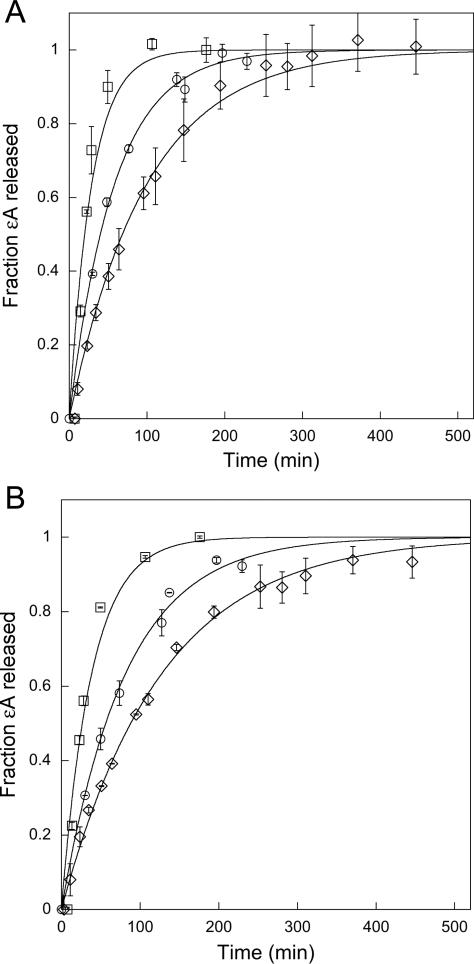Figure 3.
Single turnover excision of εA by wildtype and mutant AAG. Since εA is strongly quenched in duplex DNA and when bound to AAG, the release of εA into solution results in an increase in fluorescence that can be monitored by exciting at 320 nm and recording the fluorescence at 400 nm. The reaction time course for wildtype (□), Y127W (◇), and Y159W (○) AAG are shown for two different sequences, TEC (A) and AEA (B). The concentration of DNA was 400 nM and the concentration of AAG was either 1.2 or 2.4 μM. The two concentrations of AAG gave identical reaction curves, indicating that AAG is saturating under these conditions. Each data point reflects the average and standard deviation of three independent reactions and the lines indicate the best fits to a single exponential (eq 2).

